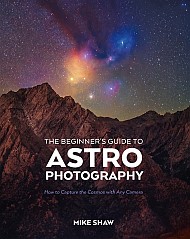Astronomy
What would Russia's inability to launch crewed missions mean for ISS?
Russia's only launch site capable of sending humans to orbit has suffered serious damage that may take two years to fix. Will NASA keep supporting the ISS without Russian involvement, or is this the end for the space station?
Categories: Astronomy
What would Russia's inability to launch crewed missions mean for ISS?
Russia's only launch site capable of sending humans to orbit has suffered serious damage that may take two years to fix. Will NASA keep supporting the ISS without Russian involvement, or is this the end for the space station?
Categories: Astronomy
Coral reefs have fuelled severe global warming in Earth's past
Over the past 250 million years, periods when coral reef growth has peaked have coincided with big rises in sea temperatures
Categories: Astronomy
Coral reefs have fuelled severe global warming in Earth's past
Over the past 250 million years, periods when coral reef growth has peaked have coincided with big rises in sea temperatures
Categories: Astronomy
We now have a greater understanding of how exercise slows cancer
Tumour growth is reduced by exercise due to a shift in the body’s metabolism that means muscle cells outcompete cancer cells in the race to get sugar to grow
Categories: Astronomy
We now have a greater understanding of how exercise slows cancer
Tumour growth is reduced by exercise due to a shift in the body’s metabolism that means muscle cells outcompete cancer cells in the race to get sugar to grow
Categories: Astronomy
The life-giving secret of protoplanetary disks? Dust.
The complex molecules required for life on Earth might never have formed if it wasn’t for cosmic dust.
Categories: Astronomy
ByteDance Launches Doubao Real-Time AI Voice Assistant for Phones
The company behind TikTok is rolling out a smartphone AI assistant that behaves less like an app and more like a secretary
Categories: Astronomy
The Universe Was Warm Before It Was Bright
There is a period in the Universe known as the cosmic dark ages. It lies between the recombination of the first atoms and the ignition of the first stars, when the Universe was thought to be cold and dark. Now astronomers have looked at the faint glow of atomic hydrogen to find that while the Universe was dark, it wasn't quite as cold as we thought.
Categories: Astronomy
Sagittarius B2 Molecular Cloud
NASA's James Webb Space Telescope took a look at the Sagittarius B2 molecular cloud, the most massive, and active star-forming region in our galaxy, located only a few hundred light years from our central supermassive black hole.
A sinister, deadly brain protein could reveal the origins of all life
We have long struggled to determine how the first living organisms on Earth came together. Now, surprising evidence hints that poorly understood prions may have been the vital missing ingredient
Categories: Astronomy
A sinister, deadly brain protein could reveal the origins of all life
We have long struggled to determine how the first living organisms on Earth came together. Now, surprising evidence hints that poorly understood prions may have been the vital missing ingredient
Categories: Astronomy
Man unexpectedly cured of HIV after stem cell transplant
A handful of people with HIV have been cured after receiving HIV-resistant stem cells – but a man who received non-resistant stem cells is also now HIV-free
Categories: Astronomy


